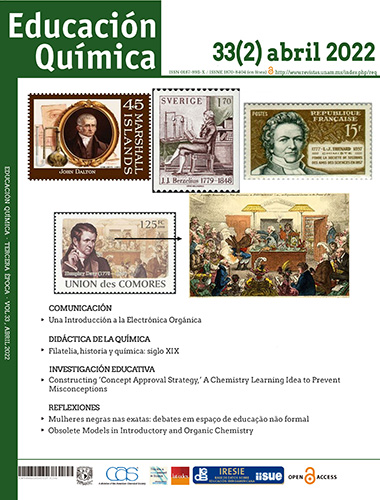Constructing ‘Concept Approval Strategy,’ A Chemistry Learning Idea to Prevent Misconceptions
Contenido principal del artículo
Resumen
The research of misconceptions focuses on identification, prevention, and elimination. Misconceptions are more commonly identified and eliminated than prevented. Elimination of misconceptions tends to be ineffective because misconceptions tend to be resistant. Therefore, preventing misconceptions is a better option than eliminating misconceptions. This article reviewed some literature to design the preventing misconceptions learning. The construction is based on an analysis of effective chemical learning strategies implemented to overcome misconceptions. Learning expected can prevent chemical misconceptions includes four components: (1) improving formal thinking ability; (2) emphasizing concepts constructed by students fundamentally; (3) involving chemical representation; and (4) developing students' positive attitudes towards chemistry. The closest learning approach to preventing misconceptions is guided-inquiry oriented learning. However, there are no stages in the inquiry learning phase detecting the misconceptions before they are applied. The students who have misconceptions can revise them during the concept validation stage. Students can apply valid concepts constructed during the application and problem-solving stages. So, the learning stages designed for preventing misconceptions are (1) Exploration; (2) Concept construction; (3) Concept Validation; (4) Concept Application; and (5) Problem-solving.
Detalles del artículo
Citas en Dimensions Service

Educación Química por Universidad Nacional Autónoma de México se distribuye bajo una Licencia Creative Commons Atribución-NoComercial-SinDerivar 4.0 Internacional.
Basada en una obra en http://www.revistas.unam.mx/index.php/req.




